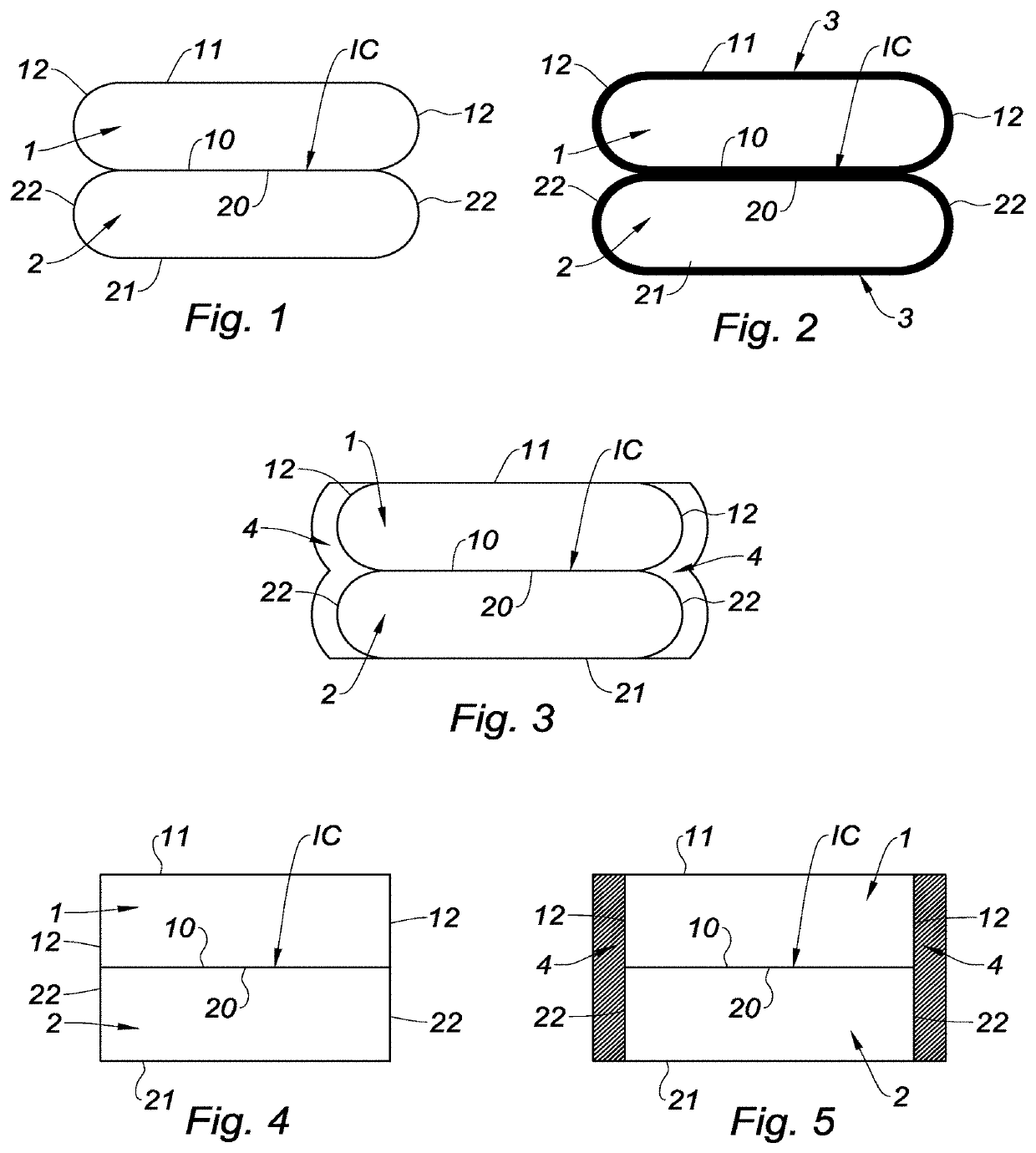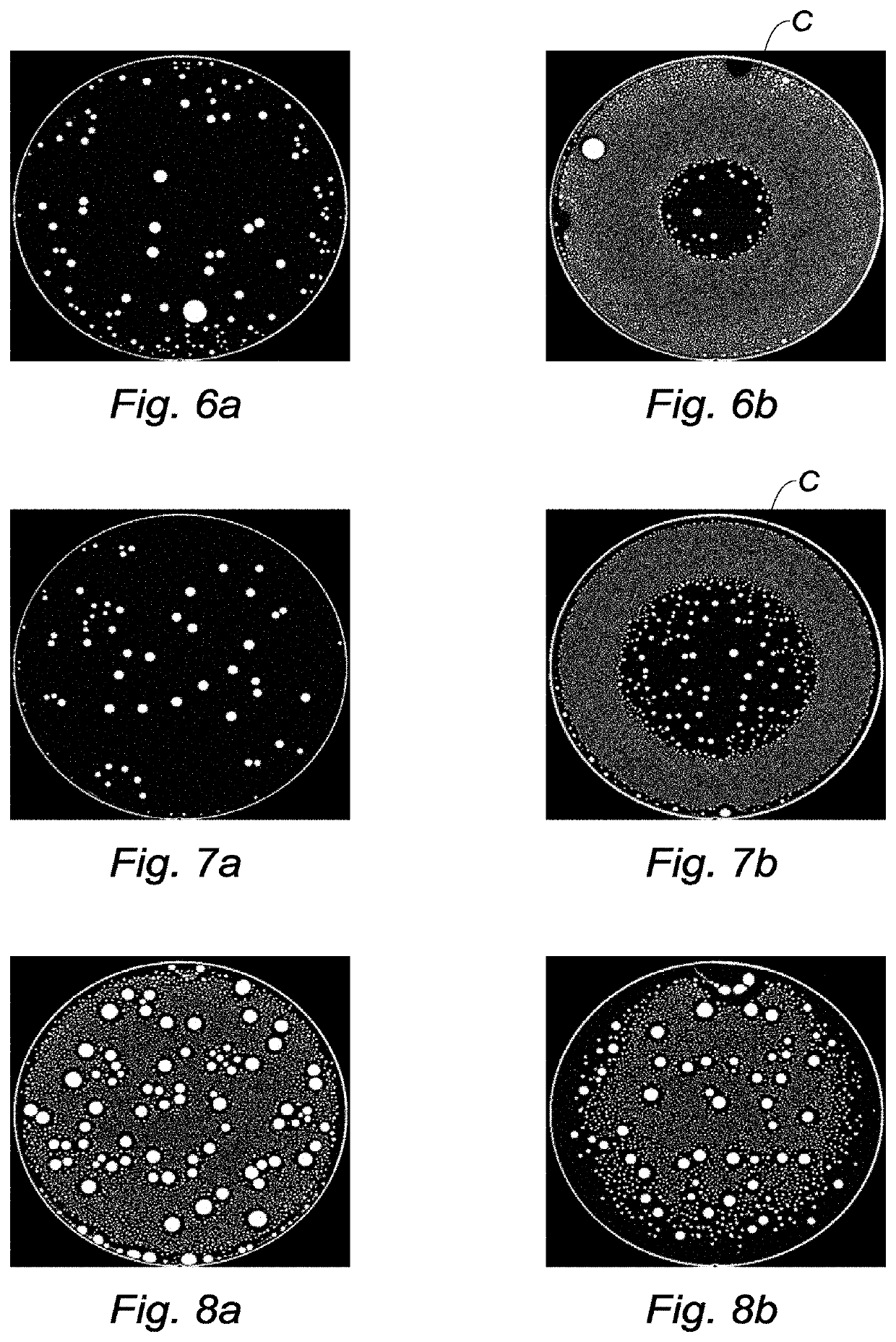Method for bonding by direct adhesion
a direct adhesion and bonding technology, applied in the direction of basic electric elements, semiconductor/solid-state device manufacturing, electrical equipment, etc., can solve the problems of changing the adhesion of the bonding interface, the prior art process is not completely satisfactory, and the waiting time is stringen
- Summary
- Abstract
- Description
- Claims
- Application Information
AI Technical Summary
Benefits of technology
Problems solved by technology
Method used
Image
Examples
implementation example no.1
Implementation Example No. 1
[0075]The first and second substrates 1, 2 are two (001) silicon wafers of 200 mm in diameter and 725 μm in thickness. The first and second substrates 1, 2 are cleaned and hydrolysed in baths of ozonated deionized water and in an APM (ammonia-peroxide mixture) solution at 70° C. so that the bonding surfaces are hydrophilic. The first and second substrates 1, 2 are direct-bonded at ambient temperature and at ambient pressure.
[0076]Step c) is carried out by forming a fluorinated coating on the lateral edges 12, 22 of the first and second substrates 1, 2 on either side of the bonding interface IC, as well as on the second surfaces 11, 21 of the first and second substrates 1, 2. In order to achieve this, step c) is carried out by turning the bonded first and second substrates 1, 2 in a bath of Novec™ 2702. Excess fluorinated coating may be removed using a solvent (e.g. Novec™ 7200) and by rinsing with isopropyl alcohol (IPA). This fluorinated coating may be r...
implementation example no.2
Implementation Example No. 2
[0094]The first and second substrates 1, 2 are two (001) silicon wafers of 200 mm in diameter and 725 μm in thickness. The first and second substrates 1, 2 are cleaned and hydrolysed in baths of ozonated deionized water and in an APM (ammonia-peroxide mixture) solution at 70° C. so that the bonding surfaces are hydrophilic. The first and second substrates 1, 2 are direct-bonded at ambient temperature and at ambient pressure.
[0095]Step c) is carried out by forming a fluorinated coating on the lateral edges 12, 22 of the first and second substrates 1, 2 on either side of the bonding interface IC, as well as on the second surfaces 11, 21 of the first and second substrates 1, 2. In order to achieve this, step c) is carried out while turning the bonded first and second substrates 1, 2 in a bath of Novec™ 1700. Excess fluorinated coating may be removed using a solvent (e.g. Novec™ 7200 or 7100) and by rinsing with isopropyl alcohol (IPA). This fluorinated coati...
implementation example no.3
Implementation Example No. 3
[0096]The first and second substrates 1, 2 are two (001) silicon wafers of 200 mm in diameter and 725 μm in thickness. The first and second substrates 1, 2 are cleaned and hydrolysed in baths of ozonated deionized water and in an APM (ammonia-peroxide mixture) solution at 70° C. so that the bonding surfaces are hydrophilic. The first and second substrates 1, 2 are direct-bonded at ambient temperature and at ambient pressure.
[0097]Step c) is carried out by adding paraffin wax to the lateral edges 12, 22 of the first and second substrates 1, 2 on either side of the bonding interface IC, as well as to the second surfaces 11, 21 of the first and second substrates 1, 2. In order to achieve this, step c) is carried out by turning the bonded first and second substrates 1, 2 in a bath of molten paraffin wax. The paraffin wax may be removed later by means of a solvent such as acetone.
PUM
| Property | Measurement | Unit |
|---|---|---|
| temperature | aaaaa | aaaaa |
| temperature | aaaaa | aaaaa |
| temperature | aaaaa | aaaaa |
Abstract
Description
Claims
Application Information
 Login to View More
Login to View More - R&D
- Intellectual Property
- Life Sciences
- Materials
- Tech Scout
- Unparalleled Data Quality
- Higher Quality Content
- 60% Fewer Hallucinations
Browse by: Latest US Patents, China's latest patents, Technical Efficacy Thesaurus, Application Domain, Technology Topic, Popular Technical Reports.
© 2025 PatSnap. All rights reserved.Legal|Privacy policy|Modern Slavery Act Transparency Statement|Sitemap|About US| Contact US: help@patsnap.com


